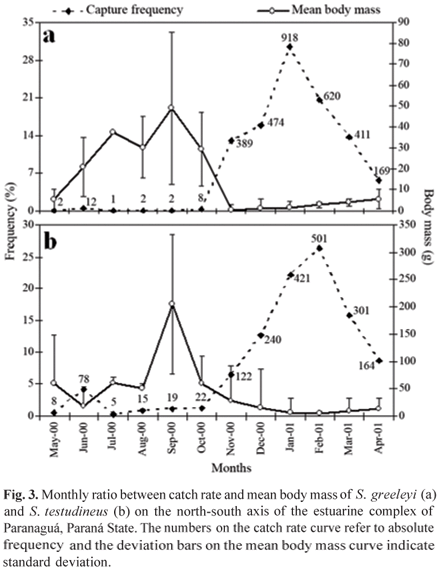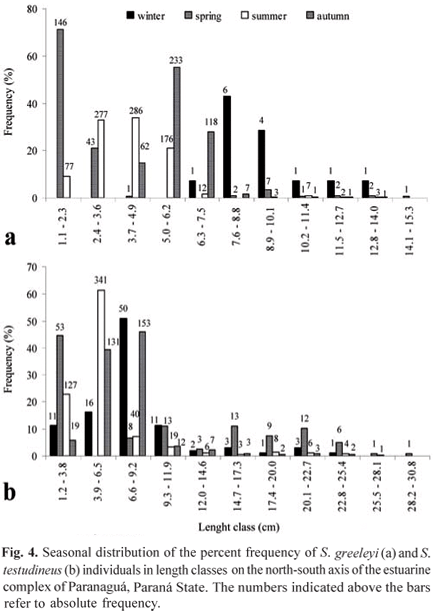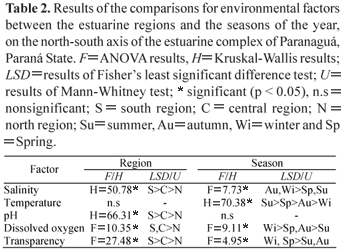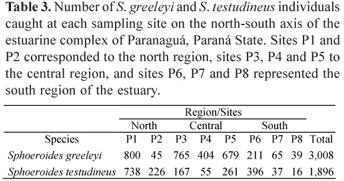The spatial and temporal distribution of Sphoeroides greeleyi and Sphoeroides testudineus were established from collections (biological material and environmental data) conducted on a monthly basis from May 2000 to April 2001 in intertidal areas along the north-south axis of the estuarine complex of Paranaguá, Paraná State. In addition to characterizing a north-south spatial gradient, which fluctuates seasonally, the variation in the abiotic factors made possible the division of the estuary into three regions: north, central and south. Spatially, it was found that the number of individuals declines significantly for both species in the north-south direction of the estuary. Moreover, significant differences were found in the size of individuals across the estuarine regions. The largest S. greeleyi individuals were caught in the north, as well as the smallest S. testudineus individuals. The catches with the highest numbers of puffer fish occurred from late spring to early autumn, coinciding with the occurrence of specimens of smaller size and lower mean body mass. The results indicate that spatial and temporal variations in the environment impact the distribution patterns of both puffer fish species, suggesting that the co-occurrence of closely related species functions as a modulating factor in that distribution.
Tetraodontidae; Estuarine-residents; Closely related species; Abundance; Length structure









